基于51单片机的公交自动报站系统设计(附程序清单)
无需注册登录,支付后按照提示操作即可获取该资料.
基于51单片机的公交自动报站系统设计(附程序清单)(任务书,开题报告,外文翻译,论文13500字)
摘 要
本文基于51单片机芯片完成硬件的搭建,使用了DS1302时钟芯片计时和SYN6288芯片模块作为语音输出及LCD12864液晶显示站点和时间,通过按键控制站点的转换。使用Proteus完成对硬件的仿真分析和Keil完成对软件代码的实现。软件代码将各个功能模块单独成一文件并在主文件中调用。最终完成公交自动语音报站系统的设计。
论文主要研究了要实现公交报站和显示所需要的最小系统,包括所需要的硬件元器和软件编程,通过模拟真实公交运行的方式,来播报和显示准备好的站点。
研究结果表明:各个芯片在有较高集成度的情况下,可以轻松实现对于硬件的实现,将各个芯片所实现的功能各自集合于软件模块内有助于系统的快速实现。
本文的特色:硬件实现的集成度较高,容易重复实现;软件使用函数化编程,可以重复使用相关代码。
关键词:STC89C52;SYN6288;LCD12864;DS1302;公交报站;
Abstract
This article is based on the 51 single-chip chip to complete the hardware construction, using the DS1302 clock chip timing and SYN6288 chip module as the voice output and LCD12864 LCD display site and time, through the button to control the site conversion. Use Proteus to complete the simulation analysis of the hardware and Keil complete the implementation of the software code. The software code separates each functional module into a single file and calls it in the main file. Finally, the design of the bus automatic voice report system was completed.
The paper mainly studies the minimum system needed to realize the bus station and display, including the required hardware and software programming, and broadcasts and displays the prepared site by simulating the way the real bus runs.
The research results show that each chip can realize the realization of hardware easily with high integration. It is helpful to realize the rapid implementation of the system by integrating the functions realized by each chip into the software module.
The characteristics of this paper: the hardware implementation of the integration is high, easy to repeat; the software uses functional programming, you can reuse the relevant code.
Key Words:STC89C52;SYN6288;DS1302;LCD12864;Bus station;
主要内容
第一章绪论主要介绍了语音合成的国内外现状和本次毕业设计的意义。
第二章是整体方案和设备选型主要介绍了整体系统的模块化组成和原理,以及不同设备的方案选择。
第三者是硬件系统的设计与实现,包括单片机最小系统三大电路的介绍、液晶显示播报信息模块、DS1302为核心的时钟实时计时模块、基于PSOLAD 语音合成模块、按键控制模块。
第四章是软件系统的设计与实现,包括主函数的设计、使用液晶来显示站点信息和时间程序、时钟实时计时程序、按键模拟公交控制程序、站点信息和服务性语句播报程序。
第五章是调试和结构,主要分为硬件的调试和软件的调试以及成果的展示。
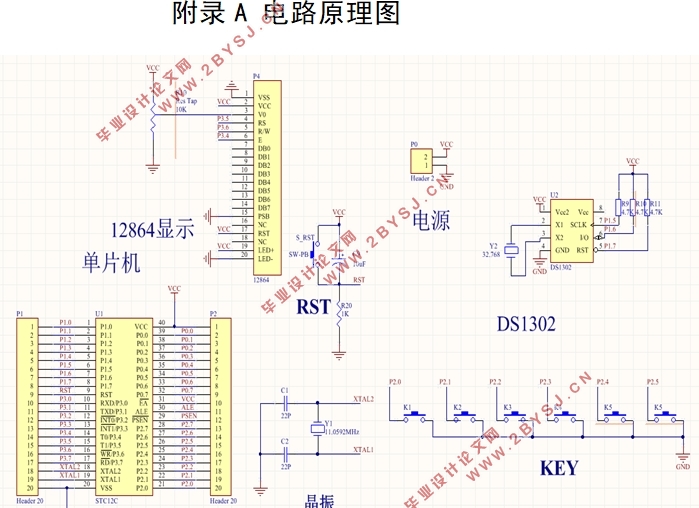
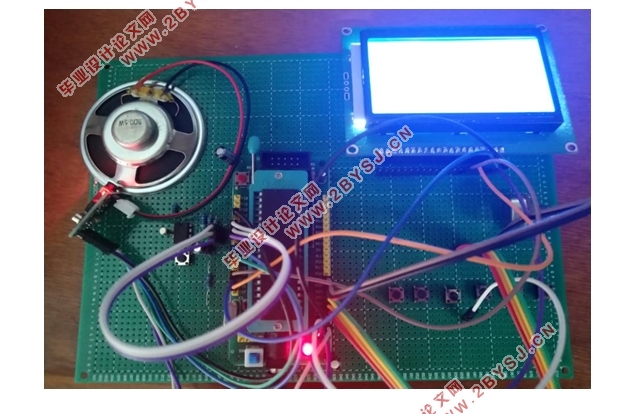
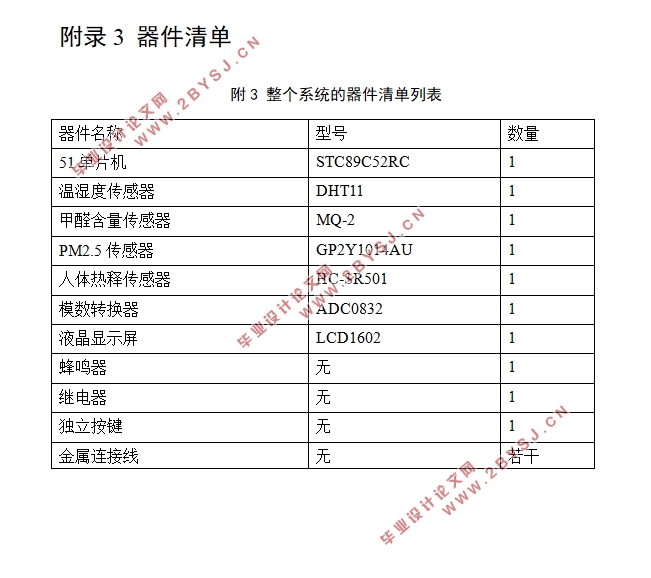
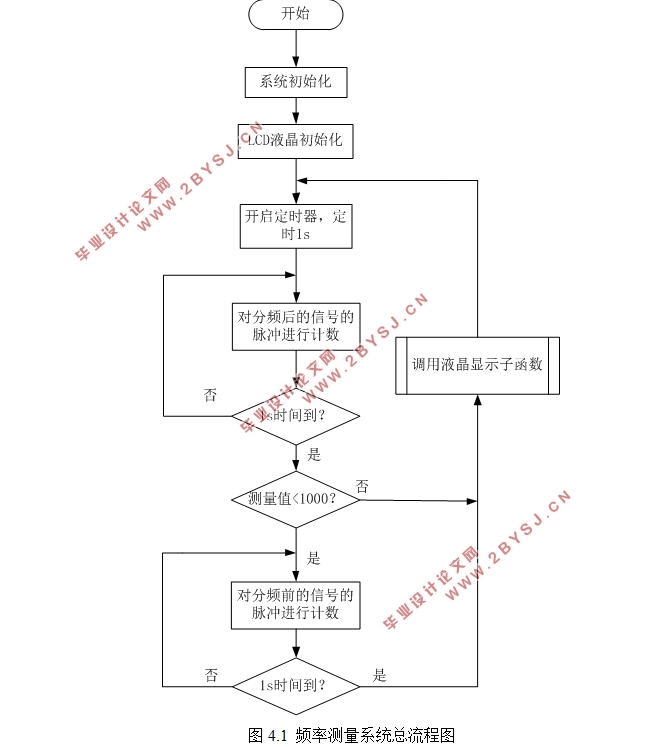
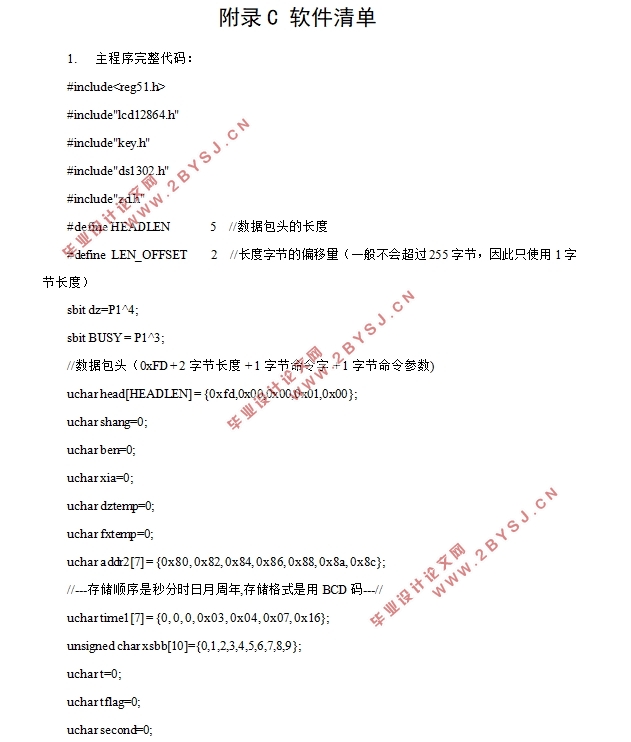
目录
第1章 绪论 1
1.1 本文研究的意义 1
1.2 语音系统的国内外现状 1
1.2.1 国外研究现状 1
1.2.2 国内研究现状 2
1.3 主要内容和预期目标 3
1.3.1 主要内容 3
1.3.2 预期目标 3
第2章 整体方案和设备选型 4
2.1 整体硬件设计方案 4
2.2 硬件设计选择 4
2.2.1 单片机芯片的选型 5
2.2.2 语音合成芯片的选型 5
2.2.3 时钟芯片的选型 6
2.2.4 显示设备选型 7
2.3 本章小结 7
第3章 硬件系统的设计与实现 8
3.1 单片机最小系统 8
3.1.1 晶振电路 8
3.1.2 复位电路 9
3.2 液晶显示模块 10
3.3 DS1302时钟模块 11
3.4 语音合成模块 12
3.5 按键控制模块 13
3.6 本章小结 13
第4章 系统软件的设计与实现 15
4.1 系统软件总体设计 15
4.2 主函数的设计 15
4.3 LCD显示程序 17
4.4 时钟程序 19
4.5语音合成模块程序设计 20
4.6 按键程序 21
4.7 本章总结 22
第5章 调试与结果 23
5.1 调试 23
5.1.1 硬件调试 23
5.1.2 软件调试与结果展示 23
5.2 本章总结 27
第6章 结论与展望 28
6.1 结论 28
6.2 展望 28
参考文献 29
附录A 电路原理图 30
附录B 元件清单 31
致谢 46
